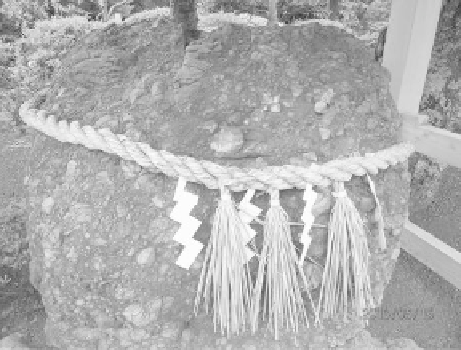Environmental Engineering Reference
In-Depth Information
FIGURE 12.7
(See color insert.)
Calcirudite cemented with calcite as a result of the precipitation of carbonate.
historical note, the reference to calcirudite in the Japanese national anthem is based on one
of the 31-syllable Japanese poems on Kokin-Wakasyu, published in the early tenth century.
In the poem, carbonate diagenesis was, for a very long time, hopefully compared with
national prosperity. Accordingly, calcirudite is called
sazare stone
(stiff megalith) and is
worshipped in Japan (Figure 12.7).
12.3.6 Carbonate Diagenesis Summary
Diagenesis occurs in the form of metamorphic reactions of carbonate, such as dissolu-
tion-precipitation (dissolution-recrystallization) of carbonate and/or changes in other
types of carbonates, such as siderite, dolomite, etc. The strength of a sedimentary soil is
strongly inluenced by its carbonate content—the higher the carbonate content, the greater
its strength. The evidence suggests that carbonate diagenesis may be one of the principal
means for the formation of nodules of carbonates, calcirudite, and other minerals, such as
siderite, magnesite, pyrite, hematite, etc.
12.3.6.1 The Case for Using Diagenetic Process in Ground Improvement
The success of carbonate cementing of granular soil particles in diagenesis leads one to
speculate that if the diagenetic process can be accelerated so as to produce the inal prod-
uct in a short time period, this could work to improve the physical functionality of soft
ground. The discussion in the remaining part of this chapter focuses on the develop-
ment of an artiicial diagenetic process that obtains carbonate diagenesis in a time period
that permits its practical application as a ground improvement technique. The technique,
which is called
artiicial diagenesis
, has the following advantages (a) since the process is
essentially generated from microbial activity, the technique is deemed to be sustainable,
(b) the time frame for application of the technique is suficiently short—thus allowing
its use in ground improvement projects, (c) the technique is economic, durable, and is

Search WWH ::

Custom Search